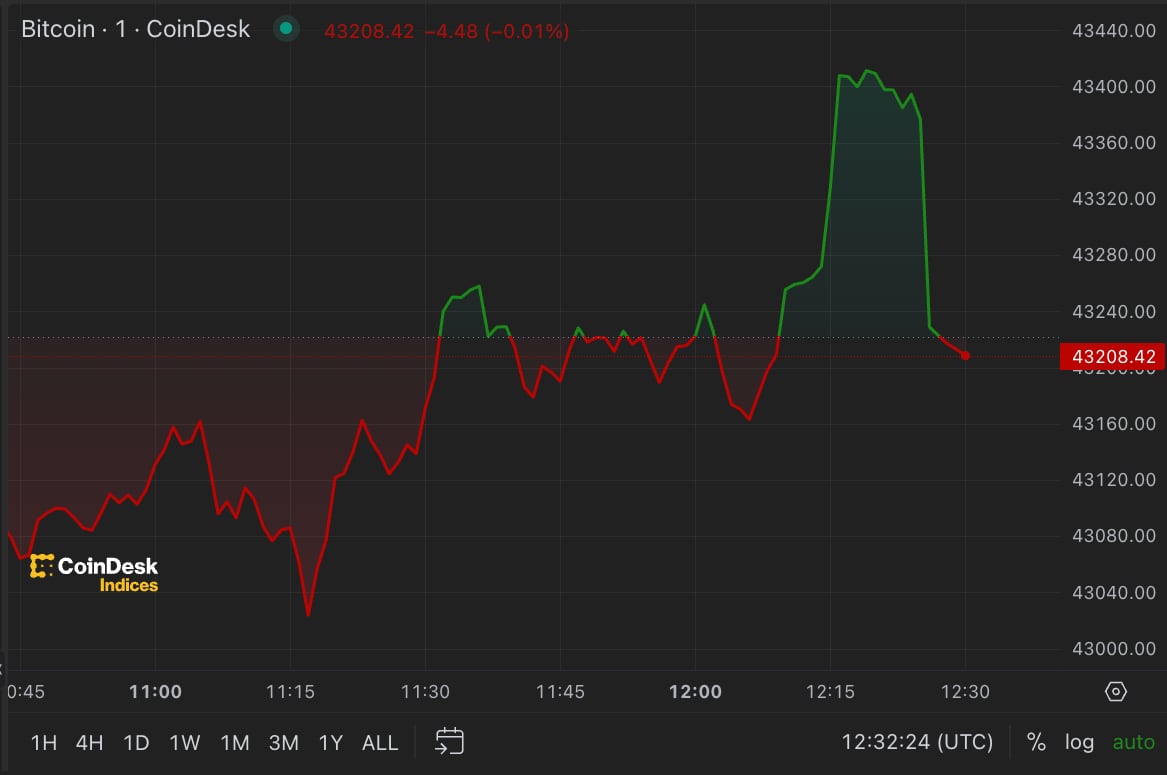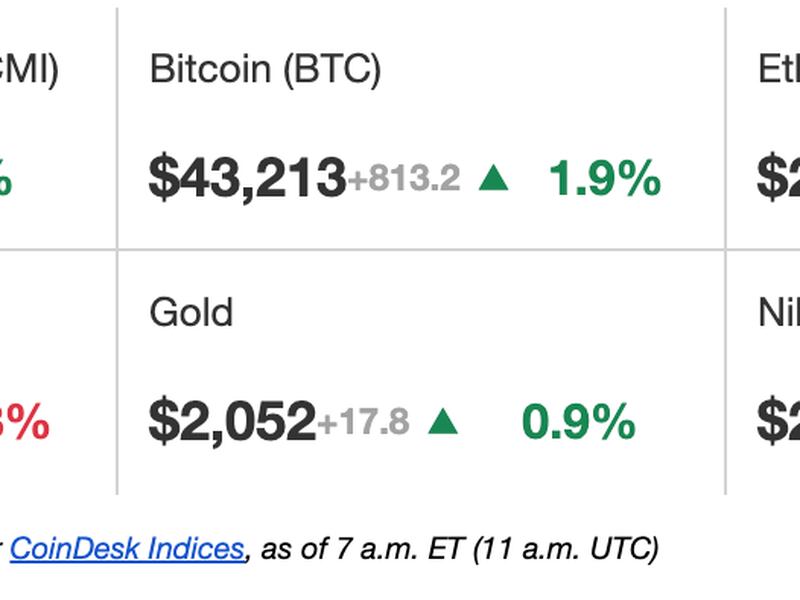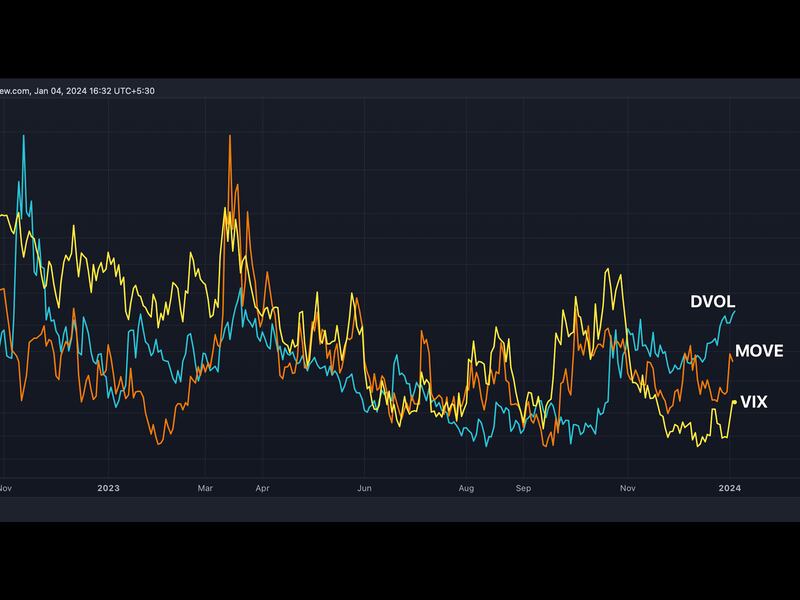First Mover Americas: Explaining Bitcoin's Sudden Drop

This article originally appeared in First Mover, CoinDesk’s daily newsletter, putting the latest moves in crypto markets in context. Subscribe to get it in your inbox every day.
Latest Prices

Top Stories
Bitcoin (BTC) traded just above $43,000 in European morning hours Thursday, recovering some losses after a leverage flush sent it down as much as 7% on Wednesday as markets reacted to analyst reports. Matrixport's out-of-consensus report served as a catalyst to unwind overleveraged positions leading to cascading liquidations, exacerbating the downfall. Nearly $560 million of leveraged long derivatives trading positions – bets on higher prices with borrowed money – had been wiped out through Wednesday, the highest amount in at least three months, CoinGlass data shows. CryptoQuant also attributed the decline to exceptionally high funding rates on the bitcoin futures market, adding selling pressure from bitcoin miners and high profit rates of short-term holders as contributing factors. Major tokens solana (SOL), ether (ETH) and Cardano’s ADA started to stabilize early Thursday after dropping more than 10% in 24 hours. The CoinDesk Market Index (CMI), a broad-based gauge tracking the market, slumped 6% in the same period, its steepest drop in recent weeks.
The minutes of the Federal Reserve's (Fed) December meeting released Wednesday showed interest-rate cuts are likely in 2024. The long-awaited liquidity easing has been widely touted as a critical bullish tailwind for bitcoin (BTC) alongside the impending spot ETF launch and the Bitcoin blockchain's quadrennial mining-reward halving. There is a catch. Past data sourced from MacroMicro shows that the early stages of the supposedly stimulatory Fed rate-cut cycle are often characterized by the economy on the brink of a recession and brief but notable rally in the U.S. dollar, a global reserve currency backed by the world's largest and most liquid government bond market.
Goldman Sachs, the high-profile Wall Street investment bank, looks likely to play a key role for the bitcoin ETFs that BlackRock and Grayscale want to introduce in the U.S., according to two people familiar with the situation. The company is in talks to be an authorized participant, or AP, for the exchange-traded funds, according to the people, who requested anonymity. That's one of the most important jobs in the multi trillion-dollar ETF industry, a role that involves creating and redeeming ETF shares to ensure the products trade in lockstep with their underlying assets. Goldman Sachs would join other finance giants in taking on that role. Last week, it was announced that JPMorgan Chase, Jane Street and Cantor Fitzgerald would take on the AP job for some of the dozen or so companies seeking the Securities and Exchange Commission's permission to offer bitcoin ETFs in the U.S.
Chart of the Day

- The chart shows Deribit's Bitcoin Volatility Index (DVOL), Merrill Lynch's MOVE index, a measure of expected short-term volatility in the U.S. Treasury market and CBOE's VIX, gauging anticipated volatility in the S&P 500.
- The renewed uptick in the three indexes suggests traders are bracing for price turbulence.
- A volatile Treasury market can cause liquidity stress in the global market, leading to risk aversion.
- Source: TradingView








